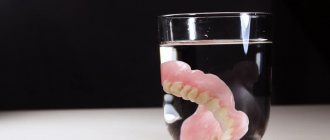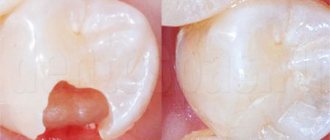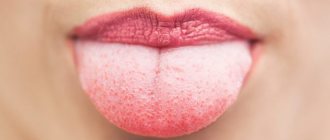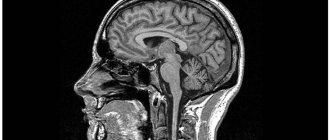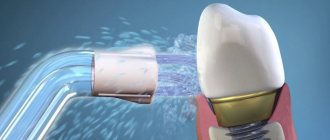Blood and circulation
Blood is a type of connective tissue that continuously circulates in one direction in a closed circle - the circulatory system.
The structure of this system includes:
- Numerous vessels (arteries, veins, capillaries).
- The heart continuously and rhythmically pumps blood.
Arterial blood enriched with oxygen enters the body from the heart. The venous system returns back, having collected carbon dioxide from the tissues.
metabolism accelerates sharply , and the body strives with all its might to maintain the usual balance of processes. And here the relationship between running and blood comes to the fore.
Causes of postnasal drip
The causes of constantly accumulating mucus in the throat can be infectious or non-infectious. These include:
- Inflammatory diseases of the nasopharynx and larynx (sinusitis, pharyngitis, laryngitis). The increased production of mucous secretion during this period is associated with the body’s attempt to clear the airways of bacteria and viruses, thereby speeding up recovery. The fact that mucus is secreted abundantly in this case, on the contrary, is a variant of the norm. Such mucous masses do not interfere, but help get rid of pathogens.
- Chronic diseases of the upper respiratory tract. These diseases cause inflammatory processes in the nasopharynx, resulting in the formation of a constant source of infection here.
- Diseases of the lower respiratory tract (bronchitis, pneumonia, tuberculosis).
- Allergic reactions to an external irritant. An allergy can be accompanied by a copious accumulation of phlegm, which is annoying and makes you want to constantly swallow it.
- Disorders of the gastrointestinal tract, in which the contents of the stomach are thrown back into the esophagus and further into the pharynx (gastroesophageal reflux disease, gastritis, ulcer).
- Features of the structure of the nasal cavity (curved nasal septum, enlarged nasal turbinates).
- Adenoids.
- Poor nutrition - eating too fatty or spicy foods irritates the gastrointestinal tract and can provoke increased secretion production.
- Bad habits. Tobacco smoking and alcohol abuse lead to burns of the pharyngeal mucosa. The body tries to get rid of the harmful effects of harmful substances by intensively producing mucous masses.
- The entry of foreign objects into the nasal cavity is a common cause of the accumulation of mucous masses in the throat of children, since children, while playing, can insert beads, small parts of toys, etc. into the nasal passages.
- Poor environmental conditions in the place of residence - polluted air and dust. In this way, the body tries to get rid of harmful particles trapped in the air.
The sooner the cause of this condition is determined, the sooner effective treatment for the throat will be prescribed and carried out.
What happens to blood circulation during exercise?
As soon as the body’s activity increases, part of the plasma from the blood leaves the blood vessels to fill the intercellular space of the working muscles, of which the maximum number is used when running. The volume of circulating blood decreases.
But tissues need increased doses of oxygen, water and nutrition, as well as accelerated removal of waste products. Therefore, the heart is forced to work harder, trying to pump as much blood as possible.
Prolonged load leads to heat loss. Therefore, the blood flow to the muscles gradually decreases. The body shunts blood to the skin to compensate for lost heat.
Muscles actively lose nutritional reserves (glucose), but produce more lactic acid , the accumulation of which leads to an imbalance in the acid-base balance.
The body successfully neutralizes and equalizes all these consequences of accelerated metabolism if the athlete follows the rules:
- training is carried out regularly, and the load is increased gradually;
- the body receives a sufficient amount of water and glucose;
- the athlete closely monitors his well-being and promptly responds to the signs that the body gives during a run.
People with pathologies of the cardiovascular system, excess weight and insufficient training should be especially careful about their health if they decide to include running in a complex of health-improving activities.
Thus, when running, the circulatory system undergoes complex physiological and chemical changes. If the loads correspond to the athlete’s state of health, then the heart gradually becomes more resilient, the blood vessels are more elastic, swelling and congestion disappear from the tissues, and blood pressure normalizes.
Burning behind the sternum
Gastritis
Ulcer
Pancreatitis
31917 May 28
IMPORTANT!
The information in this section cannot be used for self-diagnosis and self-treatment.
In case of pain or other exacerbation of the disease, diagnostic tests should be prescribed only by the attending physician. To make a diagnosis and properly prescribe treatment, you should contact your doctor. Burning sensation behind the sternum: causes of occurrence, what diseases it occurs with, diagnosis and treatment methods.
Definition
A burning sensation behind the sternum is a symptom characteristic of many diseases - this is how patients with pathologies of the cardiovascular system, spine, gastrointestinal tract, respiratory system, neuralgia and panic attacks describe their sensations.
In some cases, this symptom is not dangerous, but some pathological conditions require immediate medical attention.
Types of burning behind the sternum
There is no generally accepted classification of burning behind the sternum. When patients are asked about their sensations, they talk about pressing, pulling, stabbing, burning, and encircling pain.
Thus, the burning sensation is as varied as the causes that cause it.
Possible causes of burning behind the sternum
Burning in the sternum, a feeling of fullness and heaviness, especially in older people, can be a symptom of serious cardiac problems, and all of them equally require seeking medical help.
In diseases of the gastrointestinal tract, the burning sensation is usually diffuse, often radiating to the back. In many patients it occurs during or after eating.
Disruption of the musculoskeletal system often leads to unpleasant sensations in the chest. The burning sensation intensifies when inhaling or exhaling, and changes when changing body position.
Osteochondrosis of the thoracic spine can cause numbness in the hands and decreased sensitivity.
Neuroses and panic attacks are often accompanied by a burning sensation in the chest.
When the neuroendocrine regulation of internal organs is disrupted, patients complain of a burning sensation behind the sternum. The cause may be either insufficient maturity of the body's systems during adolescence, or previous infectious diseases, stress, bad habits, or overwork. Short-term vasospasm directly leads to the appearance of unpleasant sensations in the heart area. The attacks pass at rest and are accompanied by weakness, rapid heartbeat, and cold hands due to deterioration of blood flow.
Diseases leading to a burning sensation behind the sternum
Cardiovascular pathologies:
- Angina pectoris. Impaired blood circulation in the vessels of the heart due to atherosclerosis leads to deterioration in the nutrition of the heart muscle. During physical activity or anxiety, the heart requires more oxygen - if there is not enough oxygen, then the first signal will be discomfort in the chest area. A burning sensation, a feeling of squeezing, a tingling sensation can radiate (radiate) to the left arm, under the shoulder blade, rarely to the lower jaw, lasting no more than 15 minutes and passing with rest and after taking nitroglycerin.
- Myocardial infarction.
During a heart attack, a sharp disruption of the blood supply to the heart muscle occurs due to blockage of most of the lumen of the vessel supplying the heart by thrombotic masses. Most often, intense pain occurs, but a strong burning sensation in the chest may also be present. The attack lasts a long time, is not relieved by nitroglycerin, does not go away with rest, and is accompanied by shortness of breath, severe weakness, and decreased vision. Myocardial infarction is a life-threatening condition, so the patient needs urgent hospitalization. - A sharp rise in blood pressure may occur with a burning sensation in the chest. During a hypertensive crisis, the patient feels weakness, headache, dizziness, nausea, spots appear before the eyes and tinnitus.
- Inflammatory processes in the heart can also be manifested by a burning sensation in the chest. Typically, this condition is preceded by an infectious disease, most often of viral origin, or a severe bruise in the chest area. Unpleasant sensations can spread to the right or left side and intensify with changes in body position.
- A very dangerous condition is pulmonary embolism.
It occurs if blood clots are present in the vessels of the lower extremities - when they break off, they rise up the bloodstream and clog the pulmonary vessels. In addition to a burning sensation behind the sternum, the patient is bothered by severe shortness of breath, coughing (sometimes with blood), and severe cyanosis appears. In such a situation, emergency hospitalization is necessary. At risk are patients with varicose veins, smokers, and patients on the first day after surgery.
Diseases of the gastrointestinal tract:
- Esophageal pathology is considered perhaps the most common cause of burning in the chest. It occurs as a result of the reflux of acidic gastric contents into the esophagus, which leads to damage to its mucous membrane. A burning sensation appears after eating food (especially spicy, fatty, smoked and fried), when wearing tight belts and taking a horizontal position immediately after eating.
- Inflammatory processes in the pancreas and gall bladder are often accompanied by a burning sensation in the chest. This symptom appears a couple of hours after eating and may be accompanied by nausea and heaviness in the stomach.
Respiratory diseases:
In case of inflammation of the bronchi or lungs (bronchitis, pneumonia, pleurisy), in addition to coughing and fever, the patient may be bothered by a burning sensation in the chest.
In addition, diseases characterized by a burning sensation behind the sternum include intercostal neuralgia, osteochondrosis, intercostal myositis, and vegetative-vascular dystonia.
Which doctors should I contact if I have a burning sensation in the chest?
If a burning sensation behind the sternum is accompanied by a sharp deterioration in condition, weakness, an increase in pain, shortness of breath, coughing, or dizziness, you must immediately call an ambulance.
In other cases, you should also not postpone your visit to the doctor. Since this symptom has many causes, it is advisable to first turn to. He will prescribe examinations and, if necessary, refer to other specialists: a cardiologist; gastroenterologist; pulmonologist; neurologist.
Diagnosis and examinations for burning sensation behind the sternum
Making a diagnosis begins with a thorough history taking into account all the patient’s complaints and a physical examination.
To exclude cardiovascular pathology, first of all, a chest x-ray or CT scan of the chest and mediastinum is performed, as well as an electrocardiographic study (ECG) or echocardiography (EchoCG).
Circulatory system disorders
Often athletes note suspicious phenomena in the body associated with blood. Not all of them indicate the presence of serious diseases, but they definitely require close attention.
Where does the taste of blood come from in your mouth when running?
A metallic taste in the mouth occurs due to:
- Blood in the mouth after running, at best, appears from minor injuries to the mucous membranes of the tongue or oral cavity.
- Dental problems – stomatitis, periodontal disease or gingivitis.
- When you have a nosebleed, blood particles can get into your throat and then into your mouth.
- Inflammatory processes in the trachea and larynx - laryngitis, pharyngitis, tracheitis, bronchitis, tumor.
- Lung diseases (pneumonia, tuberculosis, tumors).
- Pathologies of the gastrointestinal tract - ulcers, tumors, erosion of the mucous membranes of the digestive canal, cirrhosis of the liver, and so on.
- Cardiovascular disorders. Angina attacks are often accompanied by a metallic taste in the mouth. And hypertension is characterized by capillary fragility, especially during physical activity.
- Heavy metal poisoning.
When stressed on inflamed tissues, capillaries are easily destroyed, saliva or mucus takes on a pink (red) tint, and red streaks appear. Coughing or harsh breathing causes secretions to enter the mouth from the nose, throat and lungs.
In these cases, you should stop jogging and then immediately consult a doctor.
Blood clotting during exercise
Whether running and other activities thin the blood is a controversial question.
If a person has blood clotting pathologies, then stress will aggravate them. However, 20-30 minutes of jogging at a speed of 6-10 km/h (after permission from a doctor) is often included in a complex of health-improving activities.
According to statistics, the threat of thrombocytosis develops more often in the morning. But evening jogging has a different effect on blood viscosity. Moreover, lovers of morning workouts have an increased risk of having a heart attack or stroke in the next 10-15 years.
In a healthy person, muscle tension simultaneously enhances the work of both the coagulation and anticoagulation systems. In the first case, the number of platelets increases, and a number of processes take place aimed at reducing bleeding time.
Next, the anticoagulant system is activated to prevent the formation of blood clots in the vessels. Both systems balance each other to eliminate the risk of negative consequences in the form of bleeding, blood clots, heart attacks, and strokes.
Should cause alarm
phenomena after a run such as drowsiness and fatigue, as well as frequent drops in blood pressure during the day
Bloody discharge after jogging
In women, blood appears after running for natural reasons, if the runner is expecting her menstrual period, forgot to take a hormonal contraceptive, or it is time for ovulation. At the same time, the blood volume is small, the odor is neutral, there are no clots or pain.
In other cases, discharge indicates pathology:
- myoma;
- ovarian cyst;
- malignant tumor;
- cervical erosion;
- endometritis;
- prolapse of the intrauterine device;
- venereal infection.
A visit to the doctor will help identify the disease at an early stage.
Blood in urine after running
This phenomenon is sometimes observed in healthy people after heavy exercise, such as a marathon .
But more often it is a symptom of a dangerous disease:
- tumors of the kidneys, bladder;
- urolithiasis disease;
- inflammation (cystitis, pyelonephritis);
- unhealed wounds after surgical intervention in the genitourinary system.
Blood in urine is not always visible visually. In diseases of the kidneys or pelvic organs, tests often show hidden blood, that is, red blood cells or hemoglobin are detected.
Nosebleeds
A single case of bleeding from the nose can be explained by short-term malaise, overheating, or a change in pressure. But if such cases occur regularly, this is a reason to go to the doctor.
Causes of bleeding:
- arterial hypertension;
- bad habits that lead to thinning of capillaries - smoking, alcohol;
- diseases leading to changes in the vascular system - hypertension, atherosclerosis, vitamin deficiency; hypovitaminosis, sepsis, heart disease and others;
- blood diseases - anemia, hemophilia and others;
- infectious or viral diseases - influenza, smallpox, malaria, scarlet fever and so on.
If there is bleeding, you should sit down, tilt your head back and apply cold to the bridge of your nose. And visit an ENT doctor as soon as possible.
What should you do if you have a bloody taste after running?
For physiological reasons, no treatment is required!
Mouth injuries should be rinsed and treated with healing and disinfecting solutions, and protected from hot and spicy foods. To do this, consult your dentist.
But if you have other symptoms: fever, cough, nausea, abdominal pain, frequent bleeding - be sure to consult a doctor for a full examination!
In addition to the listed diseases, the following are possible: vitamin deficiency, metal poisoning, tumors. Take care of your health!
conclusions
Running will only be beneficial if the loads are selected individually and training is carried out regularly - 2-4 times a week. If a person has problems with the cardiovascular system, then additional monitoring of well-being with the help of medical tests is necessary.
Lekomtsev Denis Nikolaevich
Athlete - triathlete (


